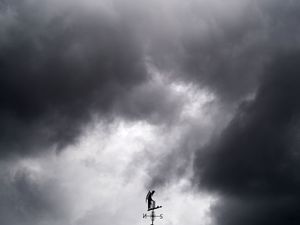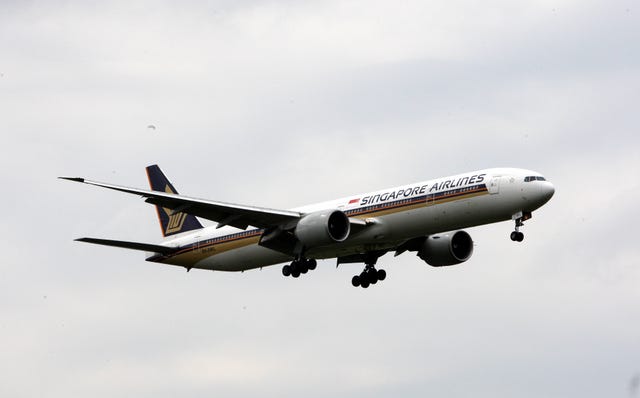What is turbulence and how dangerous can it be?
Experts have described turbulence as ‘common’ and asserted that it ‘rarely’ leads to fatalities.

A passenger has died and others were injured when a flight from Heathrow Airport encountered severe turbulence on its way to Singapore.
Singapore Airlines said the flight encountered “sudden extreme turbulence” over Myanmar’s Irrawaddy Basin at 37,000 feet about 10 hours after departure, with the pilot declaring a medical emergency and diverting the plane to Bangkok.
Experts have described turbulence as “common” and asserted that it “rarely” leads to fatalities, but what is it and how dangerous can it be?

– What is turbulence?
Turbulence is the chaotic movement of air which can cause the sudden movement of an aircraft in flight, the Met Office said.
A senior lecturer in aviation operations at Buckinghamshire New University (BNU), Marco Chan, told the PA news agency that turbulence is generally divided into four types.
Turbulence can be caused by “waves” of air, which form upon contact with mountains and which can end up hitting an aircraft “like ocean waves crashing onto a beach”, by jet streams and thunderstorms, with a final type known as “wake turbulence”.
Wake turbulence occurs as the result of an aircraft producing lift, according to the US Federal Aviation Administration (FAA).
– How dangerous is turbulence?
Aviation consultant John Strickland told PA that “turbulence happens” but with millions of flights operated each year, incidents are “limited” and “fatalities are rare”.
Mr Chan also said turbulence is “common” but made clear it should be taken seriously.
“Turbulence is of course dangerous and that is why we have so many lines of defence to try to avoid them when we can,” he said. “If we cannot, we react to it.”
But the lecturer added that airlines have implemented “quite rigorous training” with cabin crews and are “very good at managing” turbulence.
“That is why it is quite rare for this to be on the news, quite rare for fatalities, injuries,” he said.
Two British Airways cabin crew suffered broken legs when a flight from Singapore to Heathrow was affected by severe turbulence over the Bay of Bengal on June 28 last year.
According to the National Transportation Safety Board (NTSB), an independent US government investigative agency, there were 163 “serious turbulence injuries” on US-based airlines between 2009 and 2022 – an average of around 12 per year.
Mr Chan said that in extreme scenarios, turbulence can cause “structural damage” to a plane because of “how strong” the winds can be.
– How do aircraft and crew prepare for and deal with turbulence?
Mr Chan, who used to be a first officer with Hong Kong Airlines and before then with Cathay Dragon, said pilots receive “weather charts” before flights and use them to predict possible areas of turbulence.
Other flights will also report areas of severe turbulence to avoid.
He said pilots try to avoid turbulence by flying higher or lower, with autopilot technology working to keep the plane at the same altitude “with minor adjustments”.
The seatbelt sign on an aircraft will usually be switched on early into a patch of turbulence and, if it continues, cabin crew patrol the aisles to ensure passengers’ seatbelts are fastened before they strap themselves in.
– How predictable is turbulence for a pilot or for an aircraft?
“It is always invisible to the pilot or even to weather radar systems – it doesn’t pick up the turbulence on any of our screens or displays – so we just have to base that on our own experience,” Mr Chan told PA.
“And of course, if we see a thunderstorm in front of us, or we are in clouds, we know there’s going to be turbulence associated, so we try to avoid them.”
“We don’t know we’re encountering turbulence until we encounter them basically,” he added.





